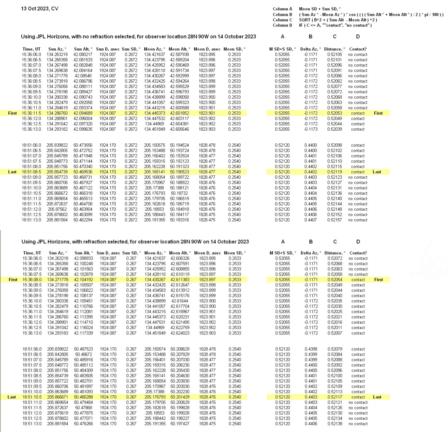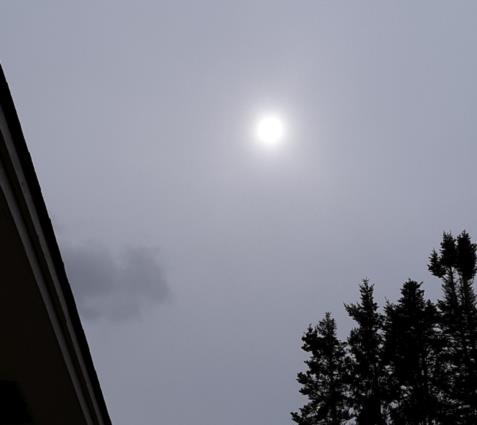
NavList:
A Community Devoted to the Preservation and Practice of Celestial Navigation and Other Methods of Traditional Wayfinding
From: Chuck Varney
Date: 2023 Oct 14, 12:17 -0700
Geoff,
I've put together two attachments that provide details of the JPL Horizons data output and what was done with it (by both of us, I think) for anyone with an interest.
The first attachment shows exactly the JPL Horizons data for sun and moon, with and without refraction selected, and the calculations done with that data that gave different first and last contact times for the two refraction states. Two time periods are shown: 15:36:06.0 - 15:36:13.0 UT and 18:51:06.0 - 18:51:13.0 UT.
The second attachment was done to show JPL Horizons angular diameters reported for sun and moon, with and without refraction, from 12:30 to 23:00 UT, at 30 minute intervals. It shows that for a given body, on a given day and time, the reported angular diameters are identical whether refraction was selected or not..
I've added a third attachment that shows the overcast western Massachussetts sky at 1721 UT today, at which time the eclipse was projected to be at a maximum 0.316 magnitude. I could see a bit of it, but the cell phone camera couldn't.
Chuck V.









